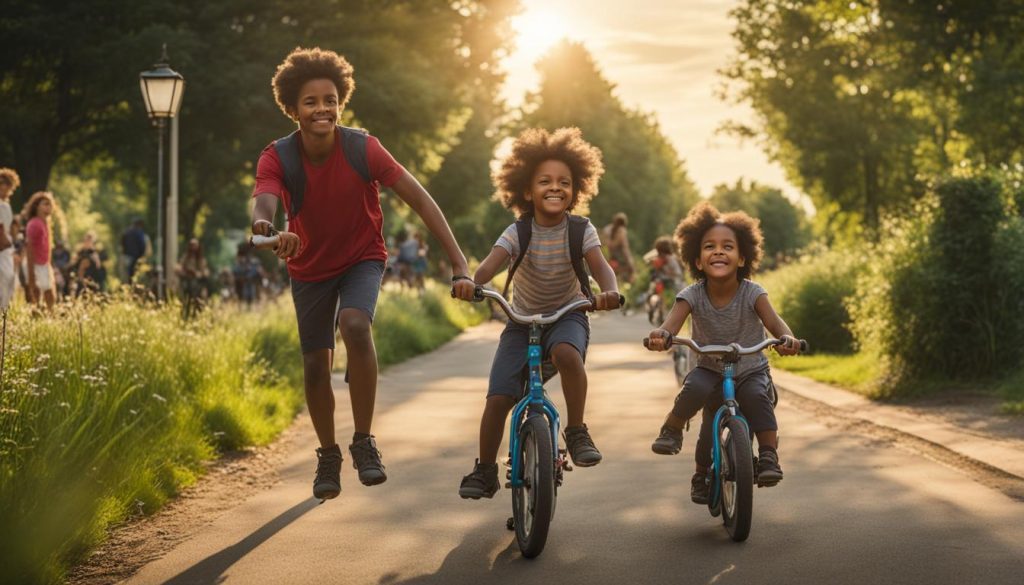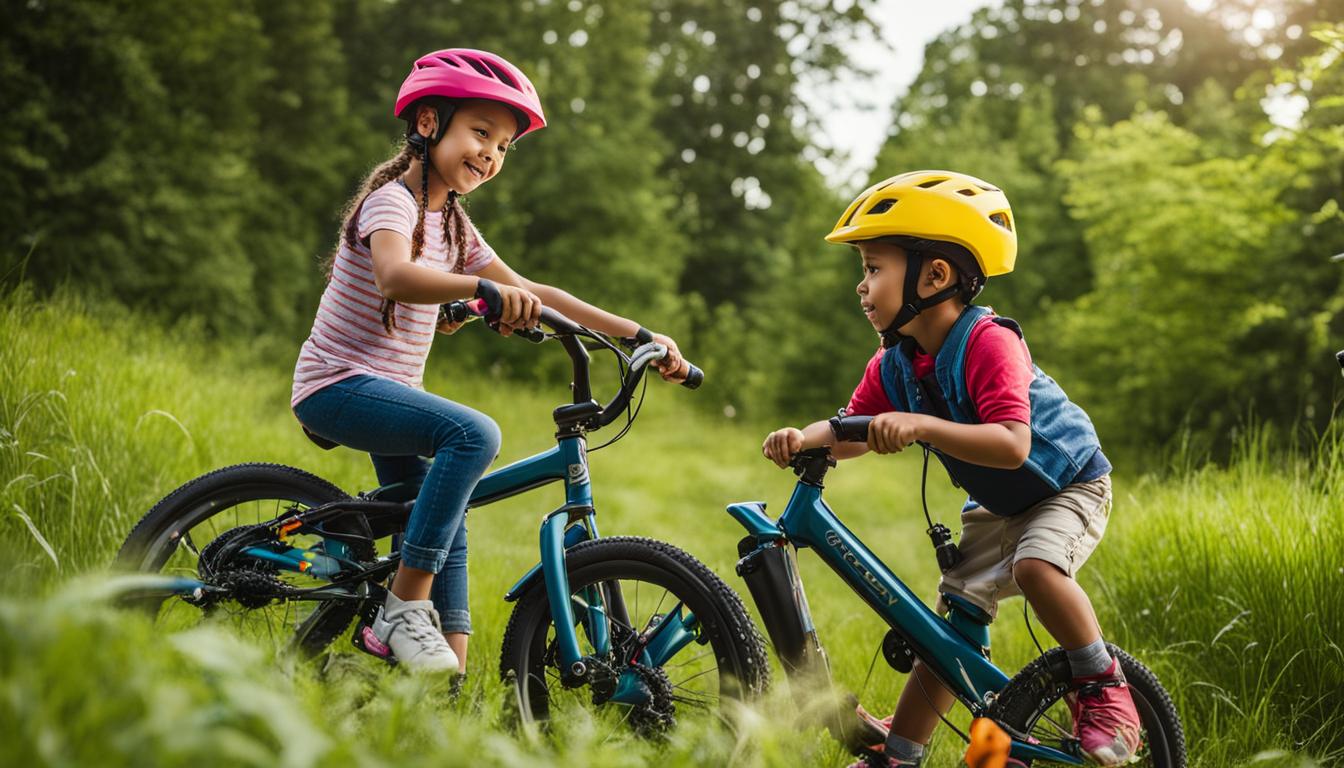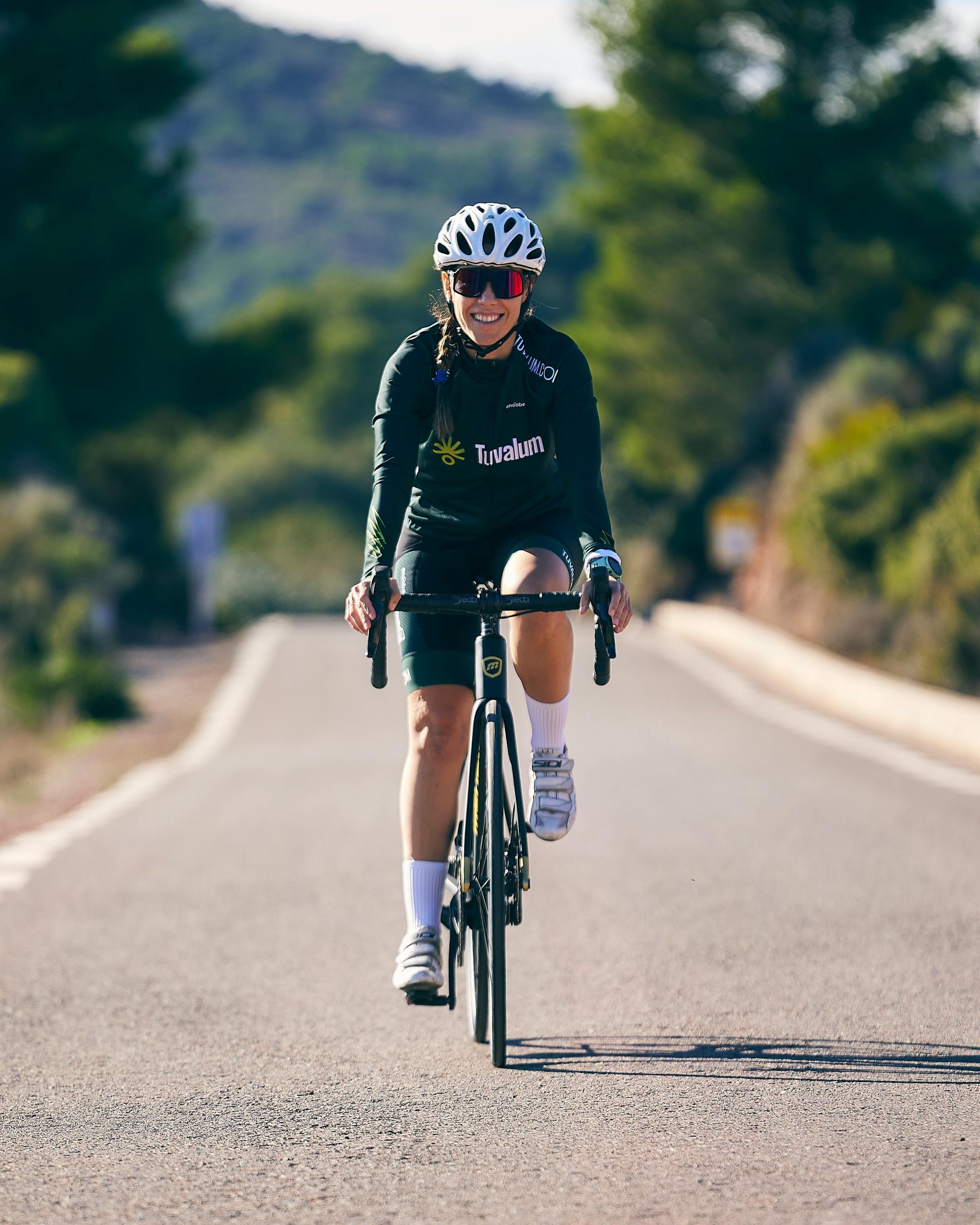Are you ready to help your little one take their first pedal strokes and experience the joy of bike riding? Learning to ride a bike is a milestone that brings a sense of accomplishment and independence to children. In this guide, we will show you the best way to teach a kid to ride a bike and provide you with essential beginner bike riding tips and kids bike riding techniques.
Read More : Unveiling the Mystery: How Much Does a Bike Cost?
One of the most effective methods to teach a child how to ride is by using a balance bike. This approach involves removing the pedals from their bike, transforming it into a balance bike. By focusing solely on balance and steering, children can develop these vital skills before adding the complexity of pedaling. The balance bike method allows them to gain confidence and feel comfortable on two wheels.
It’s important to set the stage for success. Ensure the child’s feet can touch the ground while sitting on the saddle to gain momentum and stop the bike independently. Patience is key as each child learns at their own pace, influenced by their athletic ability, determination, and confidence.
Key Takeaways:
- Remove the pedals and transform the bike into a balance bike to teach balance and steering skills.
- Choose the right bike size for your child – 12″ or 14″ pedal bikes are recommended.
- Help the child gain confidence by allowing them to touch the ground with their feet while sitting on the saddle.
- Reintroduce the pedals once the child has mastered balancing and steering.
- Teaching a child to ride a bike promotes independence, confidence, and a lifelong love for cycling.
Step-by-Step Guide to Teaching a Child to Ride a Bike
Teaching a child to ride a bike is an exciting and rewarding experience. It not only promotes physical fitness but also develops important skills like balance, coordination, and confidence. Follow these step-by-step instructions to ensure a smooth and successful learning process.
Step 1: Remove the pedals
The first step in teaching a child to ride a bike is to remove the pedals. This allows the child to focus solely on learning to balance and steer without the distraction of pedaling. Use a wrench to remove the pedals, and make sure to mark the left and right pedals with tape for easy reattachment later.
Step 2: Adjust the seat height
Next, adjust the seat height so that the child’s feet can be flat on the ground while sitting on the saddle. There should be a slight knee bend when their feet are on the ground. This position provides stability and control during the learning process.
Step 3: Practice balancing and steering
With the pedals removed and the seat adjusted, have the child sit on the bike and use their feet to walk the bike forward. Gradually progress to running and gliding, focusing on balancing and steering. Encourage the child to coast down gentle slopes or hills to practice these skills and get a feel for the handlebars.
Step 4: Reattach the pedals
Once the child has mastered balancing and steering, it’s time to reattach the pedals. Use the wrench to securely fasten the pedals back onto the bike. Make sure to thread them correctly, with the left pedal on the left side and the right pedal on the right side.
With the pedals back on, the child can now learn how to pedal and propel themselves forward. Encourage them to start by placing the pedal of their stronger foot in the 2 o’clock position and pushing off with the other leg. Gradually, they will gain confidence and be able to pedal independently.

| Benefits of Teaching a Child to Ride a Bike | Skills Developed | Safety Tips |
|---|---|---|
| 1. Physical fitness and exercise | 1. Balance and coordination | 1. Always wear a helmet |
| 2. Independence and confidence | 2. Steering and control | 2. Teach hand signals for turns |
| 3. Outdoor exploration and adventure | 3. Pedaling and propulsion | 3. Choose safe riding areas |
| 4. Socialization and peer interaction | 4. Braking and stopping | 4. Regularly check bike condition |
Remember, each child learns at their own pace, so be patient and provide the necessary support and guidance throughout the learning process. With practice and perseverance, your child will soon be riding confidently on their own. Enjoy the journey and have fun!
Conclusion
Preparing your child for bike riding is an exciting and important journey. By starting with a balance bike, you are setting them up for success by allowing them to master essential skills like balance and steering before tackling pedaling. Remember, finding a suitable area for practice, ensuring the bike is set up properly, and providing constant support and guidance are key to their progress.
It’s important to understand that every child learns at their own pace. So, be patient and allow them to build their confidence through practice. The process of teaching a child to ride a bike not only enhances their physical abilities but also fosters their independence and boosts their self-confidence. By introducing them to the joy of cycling, you are nurturing a lifelong love for this healthy and enjoyable activity.
So, gather their helmet, adjust the seat height, and prepare for some memorable bike riding adventures. With your encouragement and their determination, your child will soon be pedaling away with a big smile on their face. Happy bike riding!
FAQ
What is the fastest, easiest, and most effective way to teach a child to ride a bike?
The fastest, easiest, and most effective way to teach a child to ride a bike is by taking the pedals off their bike and using it as a balance bike.
What skills does the balance bike method help children develop?
The balance bike method allows the child to focus on learning to balance on two wheels, which is the most important skill in learning to ride.
How should a child be able to touch the ground while sitting on the saddle?
A child should be able to touch the ground with their feet flat while sitting on the saddle to gain momentum and stop the bike independently.
Which size pedal bikes are suitable for using as balance bikes?
Using a balance bike is recommended for children on 12″ or 14″ pedal bikes.
How long does it take for a child to learn to ride a pedal bike?
The time it takes for a child to master a pedal bike is dependent on their athletic ability, determination, and confidence.
When should the pedals be put back on the bike?
Once the child has mastered balancing and steering, the pedals can be put back on the bike to learn how to pedal.
What are the steps to teaching a child to ride a bike using the balance bike method?
– Remove the pedals from the bike using a wrench and tape to mark left and right pedals.
– Leave the crank arms attached to the bike as removing them can be difficult and unnecessary.
– Set the seat height so the child’s feet can be flat on the ground while sitting on the saddle, with a slight knee bend if possible.
– Have the child sit on the bike and use their feet to walk the bike forward, gradually progressing to running and gliding.
– Focus on balancing and steering while coasting down slopes or hills, encouraging turns and practicing the feel of the handlebars.
– Once the child has mastered balancing and steering, put the pedals back on the bike using the wrench and proper threading.
– Raise the saddle height slightly to allow for efficient pedaling without knee interference.
– Teach the child to set off on their own by placing the pedal of their stronger foot in the 2 o’clock position and pushing off with the other leg.
– Introduce the concept of braking by asking the child to walk alongside the bike and pull on the brake levers to see the effect.
Why is learning to ride a bike important for a child?
Learning to ride a bike is a major milestone for any child and their parents. It enhances their physical abilities, promotes independence, confidence, and a lifelong love for cycling.
What should parents keep in mind when teaching a child to ride a bike?
Each child learns at their own pace, so patience and practice are key. Finding a suitable area for learning, setting up the bike properly, and providing support and guidance throughout the process is crucial.
What are some benefits of starting with a balance bike?
Starting with a balance bike allows children to develop important skills such as balance and steering before adding the complication of pedaling.

